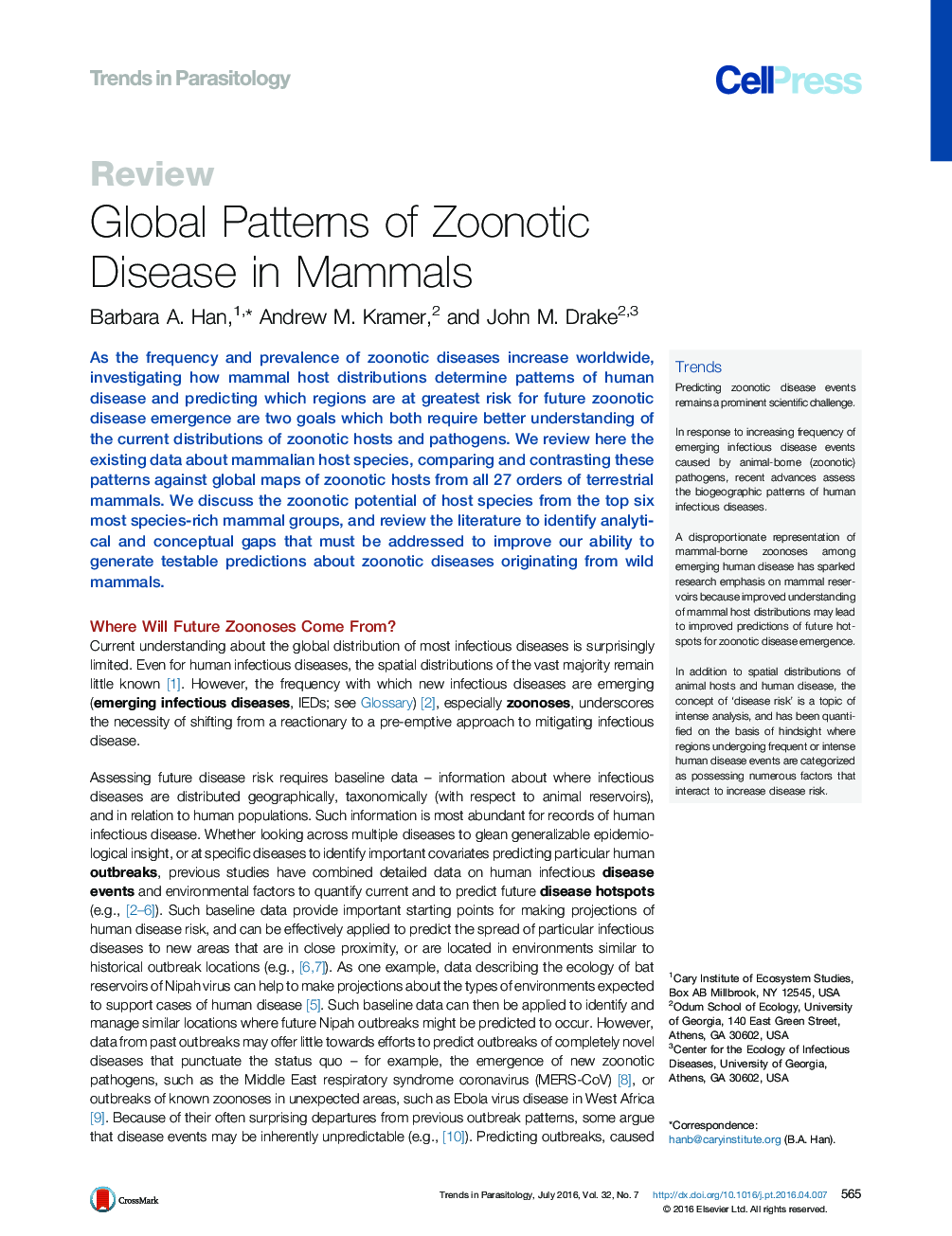| Article ID | Journal | Published Year | Pages | File Type |
|---|---|---|---|---|
| 3422882 | Trends in Parasitology | 2016 | 13 Pages |
As the frequency and prevalence of zoonotic diseases increase worldwide, investigating how mammal host distributions determine patterns of human disease and predicting which regions are at greatest risk for future zoonotic disease emergence are two goals which both require better understanding of the current distributions of zoonotic hosts and pathogens. We review here the existing data about mammalian host species, comparing and contrasting these patterns against global maps of zoonotic hosts from all 27 orders of terrestrial mammals. We discuss the zoonotic potential of host species from the top six most species-rich mammal groups, and review the literature to identify analytical and conceptual gaps that must be addressed to improve our ability to generate testable predictions about zoonotic diseases originating from wild mammals.
TrendsPredicting zoonotic disease events remains a prominent scientific challenge.In response to increasing frequency of emerging infectious disease events caused by animal-borne (zoonotic) pathogens, recent advances assess the biogeographic patterns of human infectious diseases.A disproportionate representation of mammal-borne zoonoses among emerging human disease has sparked research emphasis on mammal reservoirs because improved understanding of mammal host distributions may lead to improved predictions of future hotspots for zoonotic disease emergence.In addition to spatial distributions of animal hosts and human disease, the concept of ‘disease risk’ is a topic of intense analysis, and has been quantified on the basis of hindsight where regions undergoing frequent or intense human disease events are categorized as possessing numerous factors that interact to increase disease risk.
